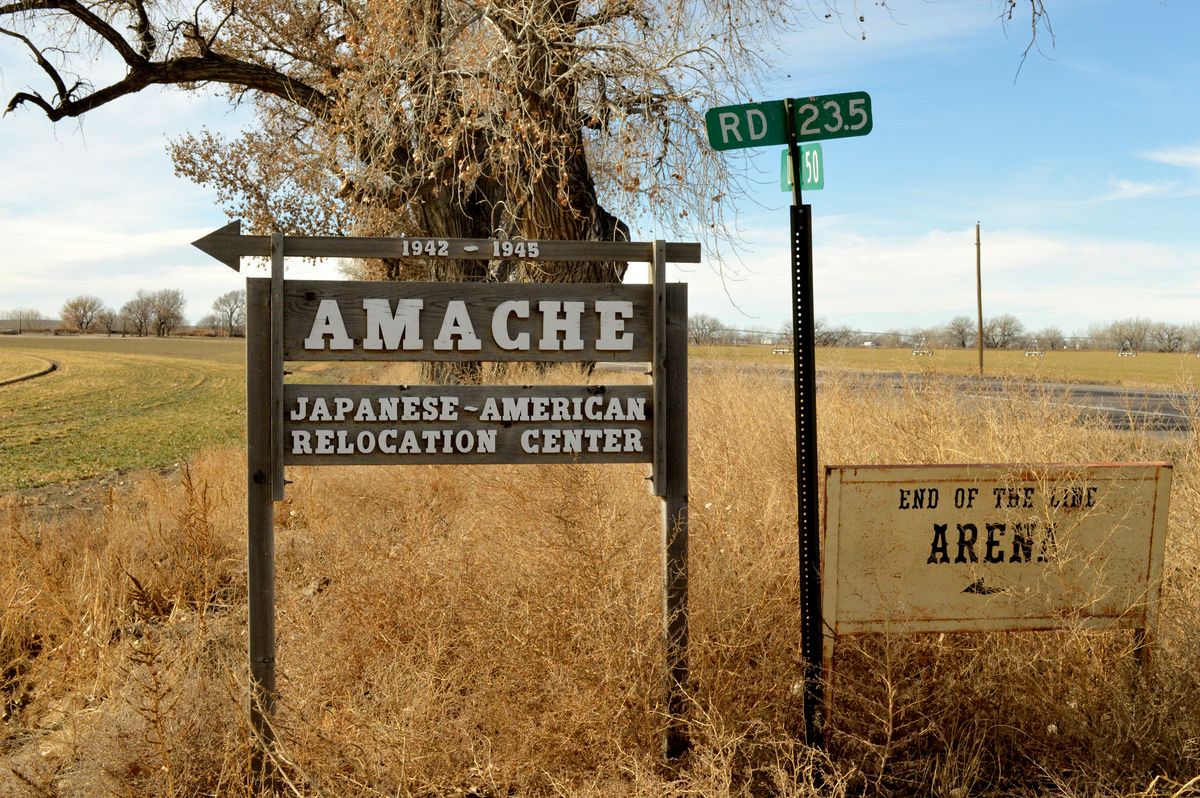Amache: Japanese Internment Camp
Amache, as it was more commonly known, happened to be the smallest. The internees lived, worked, and were educated there under armed guard and surrounded by barbed wire.

On February 19, 1942, President Franklin D. Roosevelt signed Executive Order 9066, clearing the way for the U.S. military to relocate and intern people of Japanese ancestry (including U.S. born citizens) for the duration of World War II. This resulted in the relocation of approximately 120,000 Japanese Americans to ten internment camps located across the country. Over 7,000 of these Japanese internees were housed at the Granada War Relocation Center, located in southeast Colorado. That internment lasted from 1942 until the end of World War II.
Amache, as it was more commonly known, happened to be the smallest. The internees lived, worked, and were educated there under armed guard and surrounded by barbed wire.
Over the nearly eighty years since the building of Amache, much has been written, photographed, interviewed, videoed, etc. about the camp. From my historical collection, I have referenced some of the sources I have collected. I am not a first-hand eyewitness of that historical event, but I have visited the site in southeastern Colorado about 250 miles from Denver. The act was a true unconstitutional and social injustice to the American Japanese. One must hope that the event of February 1942 will never repeat itself.
Currently, a bill by Colorado's congressional delegation of Ken Buck, Joe Neguse, John Hickenlooper, and Michael Bennet would have the National Park Service control the site and preserve it for future generations. I support this bill one hundred percent due to the camp injustices these U.S. citizens endured during the WWII era. Editor's Note: In late-breaking news, on July 29th, this bill passed the Colorado State House and now moves to the Colorado Senate.
I, the author of this article am a retired teacher, historian, and graduate of Denver's Manual High ('57). At the time of the bombing of Pearl Harbor, Manual High school's enrollment numbered over 1200 students with a more diverse student body than any other high school in the area. I always felt that Anglos, Hispanics, and Blacks appreciated our fellow Japanese Americans. The Japanese Americans were an integral part of the Manual High experience.
The literature dealing with support for Amache has been an evolutionary movement and not a revolutionary one. In the early years after WWII most U.S. history books never even mention Amache. For example, the junior high textbook by Howard B. Wilder, Robert Lundlun, and Harriet Brown This is America's Story (New York, Harper & Row, 1963) makes no reference to Amache or to any of the other internment camps. I question why this became a forgotten part of U.S. history. On the opposite literary spectrum, there are later references to Amache. The most complete book is Michi Weglyn's Years of Infamy: The Untold Story of America's Concentration Camps (New York, Morrow Quill Paperbacks, 1976). The book has photographs and graphics. It is one of the best books dealing with this historical event and its impact on the incarcerated inhabitants.
However, Studs Terkel took a more intimate approach to incarceration in The Good War (New York, The New Press, 1984). He recounted Peter Ota's internment in 1942 on pages 28-33 and followed that description with the story of Yuriko Hohri (pages 33-35) to signify the importance of the suffering experienced by the inhabitants. Is there really such an event as a "good war?" Since the 1970s, the internment of Japanese Americans has taken a more inclusive place in historical research although some sources still are not incredibly detailed. Tillie Fong's "Colorado Milestones: A Prison Camp for Citizens," Denver Rocky Mountain News, March 9, 1999, p. 16A offers a well-written large one-page article dealing with how Amache received its name from a daughter of a Cheyenne chief in the Sand Creek Massacre in 1864.
John Hopper, a social science teacher at Granada High School, started the Amache Preservation Society. He and Ms. Fong complimented Colorado Gov. Ralph Carr on his plea for justice for the internees at Amache.
Denver reflects Amache's history in various ways. Bonnie Clark's "Finding Solace in the Soil" (University of Denver Magazine, Spring 2021) takes a personal approach when she describes the land at Amache, including the plants and weather (pp. 20-21). The Minoru Yasui Plaza at W. Colfax and 15th St. honors Mr. Yasui who initiated the first U.S. Supreme Court case challenging the internment. Within The Denver Post in May 2021, Post reporter Justin Wingerter has written three articles on the Amache internment, relocation, or concentration camp. The most impressive was the Sunday, May 23, 2021 story on the front page entitled "Legacy of Amache." This story dealt with Bob Fuchigami who lived at Amache from 1942 to 1945. Other short biographies of inmates or descendants of camp internees were also included.
In August 1963, Martin Luther King, Jr. wrote a letter from his jail cell in Birmingham, Alabama. The letter stated: "Injustice anywhere is a threat to justice everywhere." I wonder if he thought about the Japanese Americans twenty years prior who were imprisoned at Amache or one of the other relocation camps.


